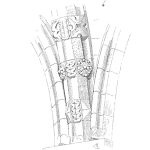
The new deepwater expansion joint design meets company requirements for factors of safety but cannot comply with ASME Section VIII load factors. How does the OEM engineering manager proceed?
A Factor of Safety (FS) ensures that a reasonable margin exists between the component’s maximum operating load and its load capacity. It accounts for the possibility of unanticipated loads that could occur during operation. Maximum operating load (Pm) is associated with operation within specification. Load capacity (Pc) is calculated using minimum material conditions (minimum yield strength and load bearing area). FS is the ratio Pc/Pm and must be greater than 1.0. When expressed in terms of stress, this is called the allowable stress method.
Load and Resistance Factor Design (LRFD) and Load Factors (LFS) are described in ASME documents. The alternative methods found in section 8 are used for advanced stress analysis of the critical components defined in API product standards. LFs also ensure that a reasonable margin exists between a load and the component’s load capacity, but LFs are based on ultimate tensile strength.

FSs and LFs affect materials selection, processing, and reliability. A large FS or LF increases load-bearing area, but:
- A preferred steel may not be available in the thicker wall or larger bar diameter driven by a large FS or LF.
- Additional processing and heat-treating steps may be required for ultra-thick wall tube or large diameter bars.
An extremely low FS or LF reduces reliability:
- For FS ≤ ~1.15 in collapse, cyclic burst and collapse loads can quickly lead to kinematic hardening.
- For carbon steels, LFs ≤ ~1.4 imply high operating stress, extremely low FS, and therefore less tolerance for unanticipated loads.
In the scenario above, the engineering manager must consider a re-design of the expansion joint. This could lead to a change in material selection, a higher assembly parts count, or a simpler configuration, but higher equipment reliability will be the result.
TRUTH: Factors of Safety and Load Factors affect reliability and manufacturability.
This is the 6th in a series of 10 articles on critical equipment design for offshore completions.
- Critical Equipment Fundamentals
- Technology Readiness Level (TRL)
- Materials and Design Risk
- Temperature Deration
- Design for Reliability (DfR)
- Factors of Safety and Load Factors
- Using Industry Standards in Design
- Modelling and Simulation
- FMEA Improves the Bottom Line
- Lab Testing Programs
Leave a Reply